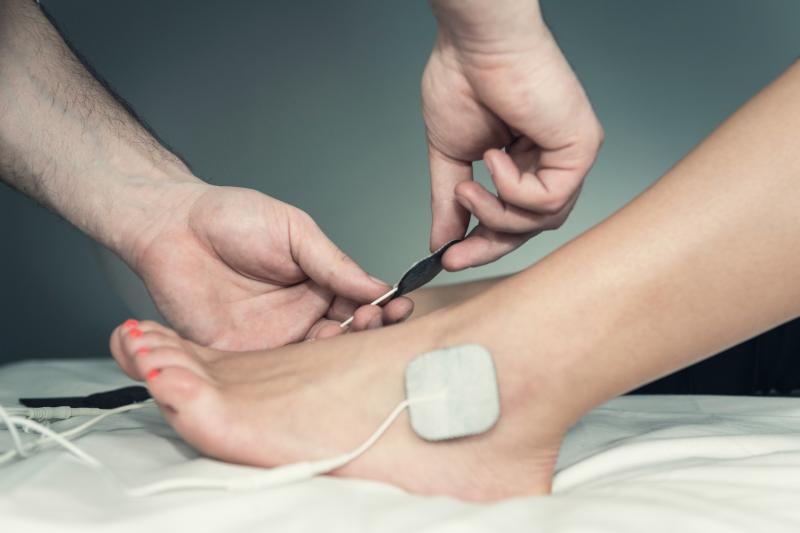
The novel MMF07 foot massager appears to be an effective treatment option for restless leg syndrome (RLS), according to a recent study.
“Safe and effective nonpharmacologic treatments are needed for RLS,” researchers said. “RLS severity scores, the primary study outcome measure, improved the greatest in those using the massager compared to those in the other groups.”
The pilot randomized controlled trial included 28 RLS patients who received no active intervention (n=7), the foot massage therapy alone (n=8), heat therapy alone (n=6), or both the foot massage device and heat therapy (n=7). Twenty-six patients were receiving oral medication for RLS symptoms. All four intervention arms were balanced in terms of RLS severity. [PLoS One 2020;15:e0230951]
After 4 weeks of trial, patients who received the massage therapy alone had a mean RLS severity score of 12.3±4.2. The no-intervention controls, on the other hand, had a score of 21.3±8.5. The resulting average difference of –9.0 points was statistically significant (95 percent confidence interval [CI], –16.3 to –1.7; p=0.017).
Notably, no significant benefit was reported for heat therapy alone (average difference, –3.6, 95 percent CI, –11.8 to 3.9) or for the combination intervention (average difference, –4.4, 95 percent CI, –12.0 to 3.1).
“The fact that simultaneous administration of heat and massage treatment was not additive, but rather less than massage alone suggests that these interactions need to be considered,” the researchers said, adding that while thermotherapy has seen utility in easing pain, empirical evidence surrounding its efficacy remains anecdotal.
The researchers also detected significant benefits of massage device on the secondary outcome of sleep quality, as measured by the Medical Outcome Sleep Scale. Both the massage alone (p=0.005) and heat therapy alone (p=0.026) groups saw significant improvements relative to controls, but not those who received the combination (p=0.11). Quality of life, on the other hand, was significantly better in all treatment arms.
Important limitations need to be taken stock of, including the small sample size, relatively short follow-up period and the lack of objective biomarkers for RLS.
“Given the open design of this study where participants were aware of their treatment modality, we recognize that the observed improvements reported by patients may be in part due to those patients’ belief in the benefit of the treatments, rather than the treatments themselves,” the researchers said. “We did have a control arm, however future work may evaluate this potential placebo effect with a placebo-controlled group.
“Larger trials of longer duration are warranted to further investigate the clinical meaningfulness of vibratory stimuli and heat in the treatment of RLS as these nonpharmacologic interventions may be effective, safe and economical treatment options,” they added.